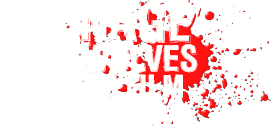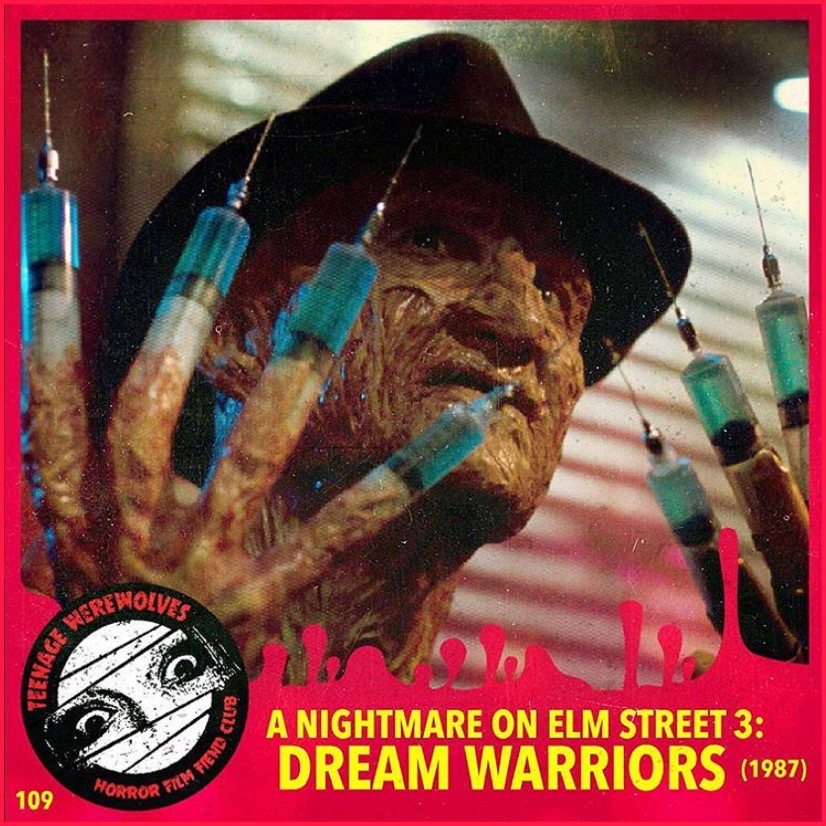(Chuck Russell, 27 February 1987)
“In my dreams, I’m beautiful…and BAD.”
Released on this day in 1987, and arguably one of the best horror sequels of all time, A NIGHTMARE ON ELM STREET 3: DREAM WARRIORS was a risk as far as producer Bob Shaye and New Line Cinema was concerned, as the previous entry in the franchise was a seen as a critical failure and the colloquial “house that Freddy built” stood upon shaky foundations. Fortunately for genre fans, Krueger’s return was an unmitigated success and heralded a definite continuation of the series.
Developed from a screenplay by Wes Craven and Bruce Wagner — which originally intended to end the series, and, at first, featured the meta-cinematic approach that would at first be rejected by the studio but would later be resuscitated by Craven for his NEW NIGHTMARE return — and featuring rewrites from Frank Darabont and director Chuck Russell, DREAM WARRIORS is as beloved by fans as Craven’s original film. In many ways, this film is a high watermark of horror entertainment in that it successfully expands the mythology while also establishing one of the more unique tones of the series; Chuck Russell’s direction takes it all into the more visually fruitful planes of fantasy with its horror, and its rife with visceral, lasting sequences and unsettling atmosphere. Russell states that he was far more interested in reinterpreting the “dreams and nightmares into a carnival…[to] go further into the dreams, and make Freddy Krueger more outrageous and add more of an element of dark humor. That worked, and the series went in that direction from then on,” and therein lies the delicate balance of this film: it retains the insidious elements of horror, and yet doesn’t go as full-tilt with the humor as future installments would. England’s Freddy remains a dangerous entity here (something that NEW NIGHTMARE would thankfully resuscitate), yet there is enough of the fun to morph him into the cultural icon who towered over the late 80’s and early 90’s with abandon. This film is also notable for the introduction to the recurring “ensemble cast” concept, as well as for the introduction of three strong female protagonists in the older, wiser Nancy; Arquette’s dream-skilled Kristen; and the switch-blade-toting, resident bad-ass, Taryn.
Though some of the darker subject matter of mass teen suicides was eventually dropped in the final script, the set pieces and sequences are fantastic here, serving as direct mirrors for the various psyches of the cast. That climactic, Ray Harryhausen-influenced sequence in the Pacoima, CA junkyard, with a set brilliantly realized by art director Mick Strawn functions as pure nostalgic bliss, and it is because of element such as this that fans have gravitated so overtly to Russell’s film; it walks a very personal path that is both accessible and unnerving, whilst engaging in the fantastical side of the genre without moving into fully realized farce. As a result, A NIGHTMARE ON ELM STREET 3: DREAM WARRIORS has fully established itself as a high watermark of the franchise, occasionally eclipsing the original in terms of out-and-out audience appeal and popularity. In many ways, the dark spirit of the original is intricately laced throughout DREAM WARRIORS’ cinematic DNA, and it wouldn’t be until Craven’s full return to the series with 1994’s NEW NIGHTMARE where we would see Freddy re-inherit his appropriate tonal roots.
With seemingly more complex depictions of teenagers locked within the internal, emotional, and mental terrors (of course, made external) — which are often reflectively more horrifying that Robert Englund’s brand of boogeyman himself — than many of its cinematic peers, Chuck Russell’s A NIGHTMARE ON ELM STREET 3: DREAM WARRIORS remains a dark psychological ride where “Freudian” Krueger is more an appropriate descriptor of our villain than anything, and it continues to be a TWHFFC favorite.

